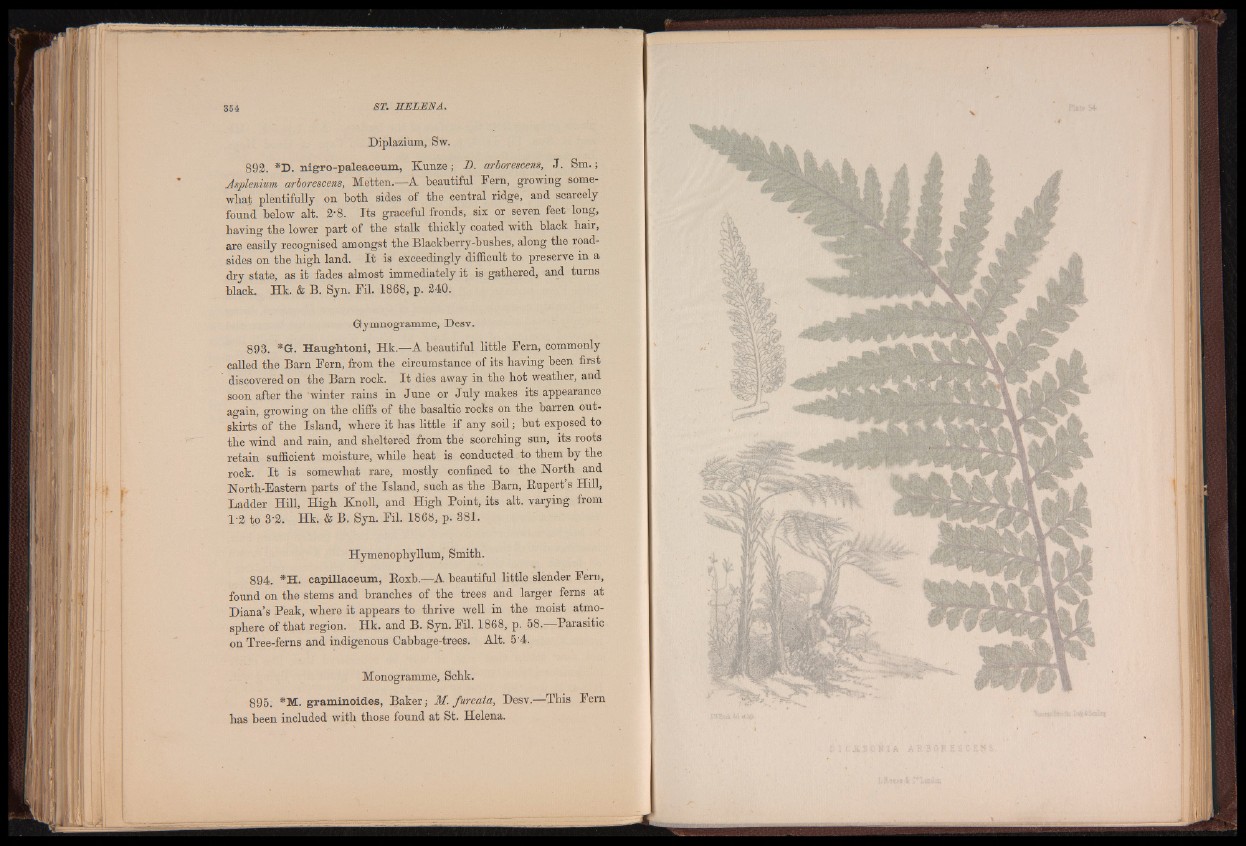
Diplazium, Sw.
892. *D. nigro-paleaceum, Kunze; D. arborescens, J . Sm.;
Asplenium arborescens, Metten.—A beautiful Fern, growing somewhat
plentifully on both sides of the central ridge, and scarcely
found below alt. 2'8. Its graceful fronds, six or seven feet long,
having the lower part of the stalk thickly coated with black hair,
are easily recognised amongst the Blackberry-bushes, along the roadsides
on the high land. I t is exceedingly difficult to preserve in a
dry state, as it fades almost immediately it is gathered, and turns
black. Hk. & B. Syn. Fil. 1868, p. 240.
Gymnogramme, Desv.
893. *G. Haughtoni, Hk.—A beautiful little Fern, commonly
called the Barn Fern, from the circumstance of its having been first
discovered on the Barn rock. I t dies away in the hot weather, and
soon after the winter rains in June or July makes its appearance
again, growing on the cliffs of the basaltic rocks on the barren outskirts
of the Island, where it has little if any soil; but exposed to
the wind and rain, and sheltered from the scorching sun, its roots
retain sufficient moisture, while heat is conducted to them by the
rock. I t is somewhat rare, mostly confined to the North and
North-Eastern parts of the Island, such as the Barn, Rupert s Hill,
Ladder Hill, High Knoll, and High Point, its alt. varying from
1-2 to 3'2. Hk. & B. Syn. Fil. 1868, p. 381.
Hymenophyllum, Smith.
894. *H. capillaceum, Roxb.—A beautiful little slender Fern,
found on the stems and branches of the trees and larger ferns at
Diana’s Peak, where it appears to thrive well in the moist atmosphere
of that region. Hk. and B. Syn. Fil. 1868, p. 58.—Parasitic
on Tree-ferns and indigenous Cabbage-trees. Alt. 5'4.
Monogramme, Schk.
895. *M. grammoid.es, Baker; M. furcata, Desv.—This Fern
has been included with those found at St. Helena.